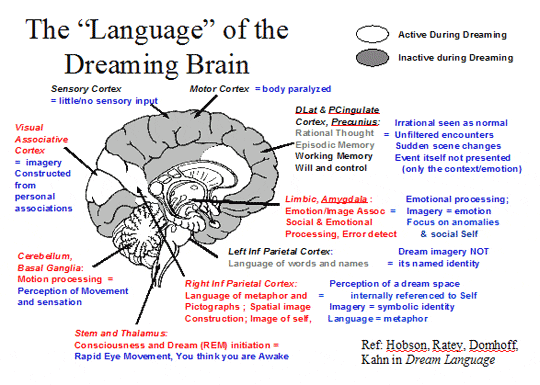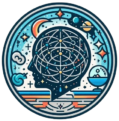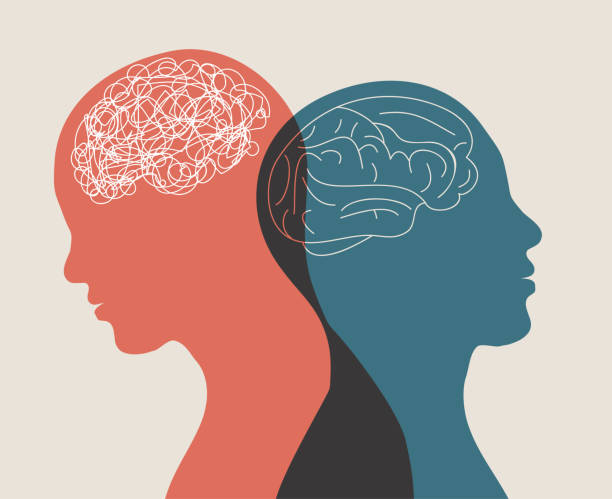Introduction
Dreams have captivated the imagination and curiosity of humanity for centuries, spanning cultural, philosophical, and scientific domains. In ancient civilizations, dreams were considered prophetic or messages from the divine. Today, modern psychology and neuroscience have shifted the perspective from mystical interpretations to a more evidence-based understanding. The consensus is increasingly clear: dreams are more than mere nocturnal oddities—they serve as a mirror into our subconscious minds and offer valuable insight into our mental health.
As researchers and clinicians delve deeper into sleep science and psychodynamics, they have uncovered that dreams can reflect unresolved emotions, anticipate psychological distress, and even facilitate emotional healing.
Read More- Sleep and Mental Health
The Science of Dreaming
Dreaming predominantly occurs during the Rapid Eye Movement (REM) stage of sleep, a period marked by heightened brain activity, irregular breathing, and temporary muscle paralysis. REM sleep typically begins about 90 minutes after falling asleep and recurs several times throughout the night. The brain activity observed during REM closely resembles that of wakefulness, which is why this stage is often referred to as “paradoxical sleep” (Hobson, 2009).

During REM sleep, various parts of the brain become highly active, especially the limbic system, which governs emotions, and the hippocampus and amygdala, which are essential for memory consolidation and emotional regulation (Walker & Stickgold, 2010). The prefrontal cortex—responsible for logic and self-awareness—is less active during REM sleep, which may account for the often illogical and fantastical nature of dreams.
One influential hypothesis, the Expectation Fulfillment Theory of dreaming, posits that dreams metaphorically discharge emotional arousal left unresolved from the previous day (Griffin & Tyrrell, 2004). In this view, dreams serve as a psychological mechanism for maintaining emotional homeostasis. For example, if an individual experienced social rejection during the day but did not fully process the accompanying emotional arousal, their dreams might enact a symbolic scenario where the same emotions are “played out,” thus fulfilling the brain’s expectation and restoring emotional balance.
Dreams and Emotional Processing
Mounting evidence suggests that dreaming plays a crucial role in emotional regulation and psychological resilience. Sleep researchers have observed that REM sleep facilitates the processing of emotionally charged memories and helps reduce the emotional intensity associated with them (van der Helm, Yao, Dutt, Rao, Saletin, & Walker, 2011). This implies that dreams might serve as a built-in mechanism for overnight therapy.
Dr. Rosalind Cartwright, a pioneer in sleep research, conducted several studies exploring the link between dreaming and emotional well-being. She found that individuals who experienced vivid dreams during emotionally distressing periods, such as after a divorce, showed greater improvements in mood over time compared to those who did not recall their dreams (Cartwright, Agargun, Kirkby, & Friedman, 2006). According to Cartwright, dreaming allows individuals to “work through” their emotions, integrating difficult experiences into their personal narratives.

In addition to regulating emotions, dreams may also serve as a predictive tool. For example, a study conducted by Schredl and Reinhard (2011) found that people suffering from depression or anxiety often reported more negative dream content, suggesting that dream analysis might provide early indicators of mental health issues before they become apparent during waking life.
Common Dream Themes and Mental Health
While dreams are highly individualistic, certain recurring themes have been observed across cultures and demographics—many of which correspond to psychological states or stressors. Common dream themes include falling, being chased, failing an exam, losing teeth, or being naked in public. Though these scenarios may appear bizarre or random, research suggests they often symbolize deeper emotional or psychological concerns.
A study featured in Psychology Today found that individuals experiencing high levels of anxiety frequently report dreams involving themes of danger, pursuit, or social embarrassment (Domhoff, 2018). These themes often mirror the individual’s waking concerns—whether about safety, performance, or acceptance.
Moreover, researchers from the University of Turku analyzed thousands of dream reports and concluded that anxiety and depressive symptoms correlate with dream content characterized by fear, helplessness, or social exclusion (Revonsuo, Tuominen, & Valli, 2015). For example:
- Being Chased: Often associated with avoiding unresolved issues or repressed fears.
- Falling: May represent a lack of control or fear of failure.
- Being Naked in Public: Can reflect feelings of vulnerability or exposure.
Recognizing these symbolic patterns may enable clinicians to understand a patient’s subconscious struggles and guide them toward more effective treatment approaches.
Nightmares and Their Implications
Nightmares—disturbing dreams that cause the dreamer to awaken—can be both symptomatic and causative in mental health conditions. They are especially prevalent among individuals suffering from Post-Traumatic Stress Disorder (PTSD), depression, or severe anxiety. Recurrent nightmares often indicate that the individual is grappling with unprocessed trauma or chronic stress (Nadorff, Nazem, & Fiske, 2011).
In a study published in the journal Sleep, researchers found that individuals experiencing frequent nightmares had higher rates of insomnia, increased cortisol levels (a stress hormone), and were more prone to cardiovascular problems (Sandman, 2010). Nightmares may also perpetuate a negative feedback loop—disrupted sleep can worsen mental health, which in turn exacerbates the frequency and intensity of nightmares.
However, not all implications are negative. Some scholars argue that nightmares serve a protective function, similar to exposure therapy. According to the Threat Simulation Theory (Revonsuo, 2000), nightmares allow individuals to simulate threatening situations in a safe environment, thereby enhancing their ability to respond effectively to real-life dangers.
Therapeutic Approaches to Dream Analysis
In recent years, dream analysis has re-emerged as a viable component in therapeutic practice, integrating both psychodynamic and cognitive-behavioral frameworks. While once confined largely to Freudian or Jungian interpretations, modern approaches focus on the emotional and symbolic content of dreams rather than rigid archetypal meanings.
One widely accepted technique is Imagery Rehearsal Therapy (IRT), which involves identifying recurrent nightmares, rewriting the narrative in a less distressing form, and mentally rehearsing the new dream before sleep. Studies have shown that IRT can significantly reduce the frequency and severity of nightmares, particularly in patients with PTSD (Krakow et al., 2001).
Cognitive-Behavioral Therapy (CBT) also incorporates elements of dream analysis. Therapists may help patients interpret dream symbols as manifestations of cognitive distortions or core beliefs. For example, a dream of failing an exam may reflect perfectionist tendencies or fear of inadequacy—issues that can be addressed using CBT techniques such as cognitive restructuring.
In psychodynamic therapy, dreams are used as a tool to access unconscious conflicts. The therapist works collaboratively with the client to explore latent meanings and emotional undertones. While this method requires a more interpretive lens, many clinicians find it effective for clients who struggle to articulate their emotions directly.
Mindfulness-based therapies also touch on dream awareness. Practices such as lucid dreaming, where the dreamer becomes aware that they are dreaming and can exert control, have been studied as tools for confronting fears or reducing anxiety (Brylowski, 1990). These techniques allow for a more active engagement with the dream world, blurring the boundary between subconscious and conscious processing.
Conclusion
Dreams are far more than ephemeral mental phenomena—they are emotionally rich, psychologically revealing, and neurologically complex experiences that offer profound insights into human mental health. From the expectation fulfillment of unresolved emotions to the thematic mirroring of psychological distress, dreams serve as nightly windows into the mind’s inner workings.
Understanding the emotional content of dreams can aid clinicians and individuals alike in diagnosing, treating, and even predicting mental health conditions. As therapies like IRT, CBT, and mindfulness increasingly incorporate dream analysis, the boundary between dream and therapy continues to blur. Far from being dismissed as nonsensical or trivial, dreams are now recognized as essential to emotional regulation, self-understanding, and psychological resilience.
As research continues to evolve, the integration of dream analysis into mainstream psychological practice holds promising potential. Whether through decoding the symbolism of a recurring nightmare or exploring the emotional aftershocks of a divorce through dream recall, the night-time narratives of our subconscious may be one of our most underutilized tools for healing and growth.
References
Brylowski, A. (1990). “Lucid dreaming and the treatment of nightmares in posttraumatic stress disorder.” Journal of Clinical Psychiatry, 51(6), 282–285.
Cartwright, R., Agargun, M. Y., Kirkby, J., & Friedman, J. K. (2006). “Relation of dreams to waking concerns.” Psychiatric Research, 145(2–3), 163–170.
Domhoff, G. W. (2018). “The Scientific Study of Dreams: Neural Networks, Cognitive Development, and Content Analysis.” Psychology Today. Retrieved from https://www.psychologytoday.com/
Griffin, J., & Tyrrell, I. (2004). Dreaming Reality: How Dreaming Keeps Us Sane or Can Drive Us Mad. HG Publishing.
Hobson, J. A. (2009). The Dreaming Brain. Penguin Books.
Krakow, B., Kellner, R., Pathak, D., & Lambert, L. (2001). “Imagery rehearsal treatment for chronic nightmares.” Behavioral and Cognitive Psychotherapy, 29(3), 293–310.
Nadorff, M. R., Nazem, S., & Fiske, A. (2011). “Insomnia symptoms, nightmares, and suicidal ideation in a college student sample.” Sleep, 34(1), 93–98.
Revonsuo, A. (2000). “The reinterpretation of dreams: An evolutionary hypothesis of the function of dreaming.” Behavioral and Brain Sciences, 23(6), 877–901.
Revonsuo, A., Tuominen, J., & Valli, K. (2015). “Thematic content of nightmares and their implications for mental health.” Consciousness and Cognition, 33, 77–84.
Sandman, C. A. (2010). “Nightmares, sleep disturbances, and cardiovascular risk.” Journal of Sleep Research, 19(2), 305–312.
Schredl, M., & Reinhard, I. (2011). “Dream recall frequency, attitude toward dreams, and the Big Five personality factors.” Dreaming, 21(3), 175–186.
van der Helm, E., Yao, J., Dutt, S., Rao, V., Saletin, J. M., & Walker, M. P. (2011). “REM sleep depotentiates amygdala activity to previous emotional experiences.” Current Biology, 21(23), 2029–2032.
Walker, M. P., & Stickgold, R. (2010). “Overnight alchemy: Sleep-dependent memory evolution.” Nature Reviews Neuroscience, 10(3), 218–226.
Subscribe to PsychUniverse
Get the latest updates and insights.
Join 3,027 other subscribers!
Niwlikar, B. A. (2025, June 14). The Fascinating Science of Dreams and 3 Common Dreams. PsychUniverse. https://psychuniverse.com/fascinating-science-of-dreams/



